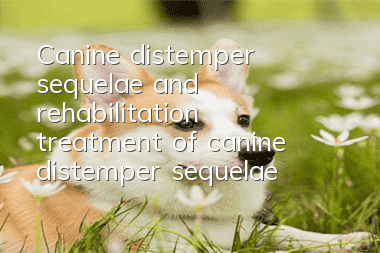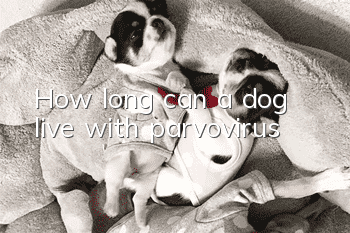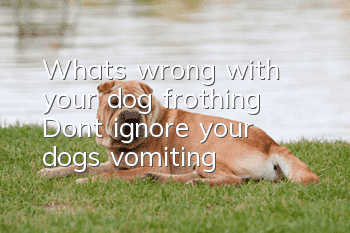Canine distemper sequelae and rehabilitation treatment of canine distemper sequelae

Parents who raise dogs should be aware of the common diseases of raising dogs, especially some of the more common diseases. Dog distemper is a very serious infectious disease. The mortality rate is as high as over 80%. The onset period of this disease is from October to April next year. What are the symptoms of canine distemper if a dog gets it?
1. Sequelae of canine distemper
1. The incubation period of canine distemper is generally 3 to 9 days, and the symptoms are also diverse. This has a certain relationship with the growing environment. When the dog’s canine distemper begins, the body temperature will continue to rise. This situation will continue to rise. Lasts about three days. The dog's fever will gradually subside, and it will look like he has recovered from a cold. But within a few days, the dog's body temperature will rise again, and the duration may not be known. In the most severe cases, dogs may have difficulty breathing or even develop intussusception, and eventually severe dehydration may lead to death.
2. If it is neurotic canine distemper, most of it will appear in about 10 days. Common symptoms are neurological symptoms caused by some pathological conditions such as footpad keratosis and nose keratosis. Sometimes the symptoms vary depending on the location. Viral symptoms in dogs are mainly manifested in the brain, so they will affect the dog’s basic daily movements.
3. The occurrence of canine distemper virus can cause eye damage to dogs, and keratitis usually occurs about 15 days after the onset. If the cleavage is severe, corneal ulcers, perforations, and blindness may occur. This disease often occurs in puppies, and the mortality rate has reached as high as 80 to 90%. Subsequent symptoms such as pneumonia, enteritis, and intussusception may occur.
2. Rehabilitation treatment of distemper sequelae
1. Drug treatment starts with two weeks of treatment. Neostigmine methyl sulfate injection can be injected subcutaneously once a day, 0.8 mg each time. In the second stage, the drug treatment became four weeks, and neostigmine methyl sulfate injection was injected twice a day, each time also 0.8 mg. In the third stage, the drug treatment became two weeks. Weekly, I injected neosamine methyl sulfate injection every other day, 0.8 mg each time.
2. Another method is massage. This method is aimed at the muscle atrophy of the dog's limbs, so the dog can be treated with massage, once a day, 10 times as a course of treatment, and it can be combined with medication.
3. Another is to let the dog do more exercise. The dog can take a walk for 10 to 20 minutes every night after eating. When walking, the dog should walk slowly. The walking location should choose a flat building and a gentle slope. . Be careful not to let your dog exercise too much.
The above is some relevant content on the sequelae of canine distemper in dogs and the rehabilitation treatment for the sequelae. As a dog parent, you must be carefulTake good care of the dog, pay attention to the dog's dietary health, and do not let the dog be troubled by some diseases.
- Can canine hookworm be transmitted to humans? Dogs are healthy!
- What should you do if your puppy has diarrhea just a few days old? Common dog diseases!
- What circumstances can cause a golden retriever's nose to become dry and cracked?
- Differential Diagnosis of Vomiting in Dogs
- What are the coat colors of Eurasian dogs?
- What to do if your dog accidentally eats black desiccant
- Why do dogs like to lick their owners’ faces?
- What causes a dog's dry nose? Is he sick?
- What are the common dog eye diseases? Inventory of dog eye diseases
- How big can a Chow Chow grow and is it easy to raise_Training|Price|Pictures



